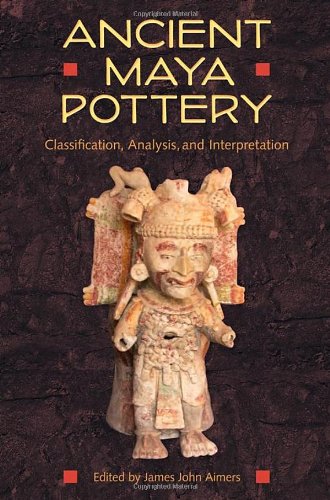

Most ebook files are in PDF format, so you can easily read them using various software such as Foxit Reader or directly on the Google Chrome browser.
Some ebook files are released by publishers in other formats such as .awz, .mobi, .epub, .fb2, etc. You may need to install specific software to read these formats on mobile/PC, such as Calibre.
Please read the tutorial at this link: https://ebookbell.com/faq
We offer FREE conversion to the popular formats you request; however, this may take some time. Therefore, right after payment, please email us, and we will try to provide the service as quickly as possible.
For some exceptional file formats or broken links (if any), please refrain from opening any disputes. Instead, email us first, and we will try to assist within a maximum of 6 hours.
EbookBell Team

4.1
80 reviews“Aimers has brought together leading Maya ceramicists who provide their candid views on how they classify pottery. This volume is of particular theoretical strength for the discussion on terminology in classification, both for critically evaluating the type-variety system and for general classification of pottery.”—Heather McKillop, author of Salt
“At last, we have the opportunity to learn the potential strengths as well as the pitfalls of a single method for the study of the prehistoric Maya.”—Fred Valdez Jr., coeditor of Ancient Maya Commoners
“An intriguing journey through an analytical technique that is foundational to building deep and complex histories yet is deployed with a flexibility that some accept and others question.”—Patricia A. McAnany, University of North Carolina, Chapel Hill
“Aimers has pulled together a series of theoretical, methodological, and substantive papers by prominent Maya ceramicists that evaluate the development, current utility, and limitations of the type-variety method.”—E. Wyllys Andrews, Tulane University
The ancient Maya produced a broad range of ceramics that has attracted concerted scholarly attention for over a century. Pottery sherds—the most abundant artifacts recovered from sites—reveal much about artistic expression, religious ritual, economic systems, cooking traditions, and cultural exchange in Maya society.
Today, nearly every Maya archaeologist uses the type-variety classificatory framework for studying sherd collections. This impressive volume brings together many of the archaeologists signally involved in the analysis and interpretation of ancient Maya ceramics and represents new findings and state-of-the-art thinking. The result is a book that serves both as a valuable resource for archaeologists involved in pottery classification, analysis, and interpretation and as an illuminating exploration of ancient Mayan culture.